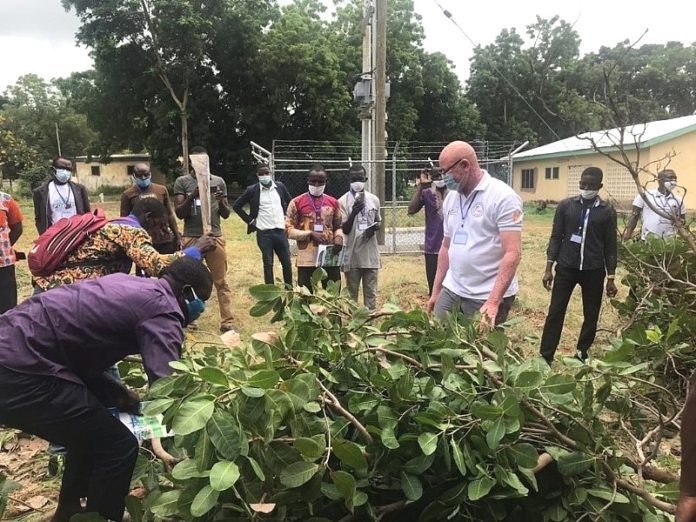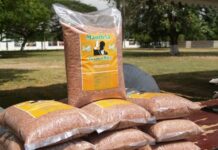The Deutsche Gesellschaft für Internationale Zusammenarbeit (GIZ) GmbH held a 2-day training of Agricultural Extension Agents (AEAs) in the Upper West, Savannah and North East Regions of Ghana to improve on the productivity of unproductive and over-aged cashew plantations using a technology named “Topworking”.
The training was aimed at improving the capacities of the AEAs in line with the government’s Planting for Export and Rural Development (PERD) programme, to expand agroforestry by focusing on cashew production in the northwest zone of Ghana.
The training, which was organised by the Resilience Against Climate Change (EU REACH) project, with funding from the European Union (EU), provided a platform for 14 AEAs to build and enhance their capacities and knowledge levels on the technique of topworking unproductive and aged cashew plantations.
Eleven AEAs from all districts of the Upper West Region, and the rest are; one AEA each from Sawla-Tuna-Kalba and North Gonja both in the Savannah Region, and one from Mamprugu Moagduri in the North East Region benefitted from both the theoretical and practical sessions of the training workshop.
The Upper West Regional Director of the Department of Agriculture, Emmanuel Sasu Yeboah advised that though the environment is not conducive for cashew cultivation, science and technology applications would make it workable.
“I will urge our beneficiaries to apply the technical knowledge they would be gain from this workshop to make cashew very productive in this region. The region is not badly placed when it comes to cashew production, if we apply all the knowledge we receive, with no time, cashew production in the REACH operational areas and the region at large will boom” he said.
The training is in two phases: Phase One focuses on criteria for selecting unproductive trees, cutting of selected trees or stumping, painting of the cut surface, covering the stump with leaves and branches to facilitate the initiation of new shoots, the removal of cover and monitoring of shoot development.
Phase two would be held in October. Its focus would be shoot development and subsequently graft unto successful shoots identified using the usual cashew grafting procedures or protocols.
The principle of topworking is the replacement of the crown of an underperforming tree, by grafting scions with desirable characteristics from ‘elite mother trees’ on them, with the purpose of improving the productivity of the trees by taking advantage of its well-developed root system. Topworking ultimately provides such advantages as rapid growth (with new multiplications), a quick return on investment as production can start in the same year, and improvement of yields of the trees which had low or no productivity before topworking.
Story by: Reuben Quainoo.








